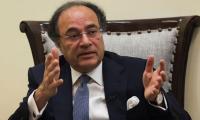LAHORE: An encouraging change has occurred in the textile sector, as for the first time the top exporter is from the apparel sector – a position normally enjoyed by basic textile exporters.
Style Textiles Private Limited, an apparel manufacturer exported its value-added products worth $333 million in FY2020, making it the lead exporter. Nishat Mills Limited that mostly occupied the top spot has been relegated to second place with exports worth $291 million.
Nishat basically exports yarn, fabric, and home textiles, though it entered apparel export a few years back. The next six in the list are also garment or knitwear exporters.
It may be mentioned that textiles account for over 55 percent of Pakistan’s exports. These exports were dominated mostly by basic textiles (yarn, fabric, and home textiles mostly bed wear).
All these items are low value products that have kept the Pakistani exports low. Garments and knitwear are high valued finished products of textiles that fetch much higher price than basic textiles.
This paradigm shift was possible mainly because of the China factor. Duties imposed by the US President Donald Trump on Chinese goods exported to the United States forced the US buyers to shift to other markets.
It may be mentioned that Pakistan was not the first priority. The foreign buyers first approached Bangladesh, Vietnam, and Indian exporters.
However, the producers in these three economies were already operating on full capacity. They needed time to add new capacities.
The entrepreneurs in these economies were hesitant to add capacities until they were sure that measures taken by Trump against China would not be reversed. The absence of Chinese textiles created a vacuum that needed to be filled quickly.
Pakistan’s apparel industry was sitting on huge unutilised capacities when Chinese textiles were slapped with punitive duties. The western buyers mostly from the European Union (the EU also imposed duties in line with the US on Chinese textiles) started placing orders in Pakistan.
In the meantime, Covid-19 also engulfed the entire world. The demand went down in developed economies that created liquidity problems for Bangladesh’s apparel exporters.
They could not execute new orders until their earlier payments were cleared. Pakistan opened its manufacturing sector much earlier than its competing economies. Since its apparel producers had capacity, they got orders when others were not in production mode.
Interaction with the apparel exporters reveals that most of them are now operating on full capacity. Many of them have now started refusing additional orders because of lack of capacity.
They are planning expansion that would take time, hoping that the demand lasts when they have commissioned additional capacities. They are moving with caution adding 10-20 percent capacity though the demand is for 100 percent increase.
The quality of Pakistani apparel is better than Bangladesh and India, but they are worried about China where the production has not yet come into full gear.
Foreign buyers may opt for some textile imports from China because of its superior quality, but Pakistani entrepreneurs hope that they would be able to feed their 10-20 percent capacities, which they have started adding.
One interesting point in this regard is that the going is extremely good for the larger well-established apparel exporters. However, things are not so rosy for small exporters that come across some quality issues when they outsource their inputs for printing or dyeing.
In our country, the culture is such that the people down the value chain get their work approved and start supplying dyed and printed products according to the specifications and environmental standards. But once a while, they use carcinogenic dye or substandard fusion material hoping that it would not be detected.
It escapes the scrutiny of exporters, but the auditors from the buyers that give the final approval for shipment always detect the slightest flaws in use of dye or other materials. As a result, the whole consignment gets rejected. It results in total loss for the exporters.
A small exporter with finances of Rs10 million cannot afford to bear the loss of his total capital. Many small exporters have gone out of business.
Meanwhile, larger exporters have gradually learnt their lesson and have commissioned the printing and dyeing equipment inside their premises. They are now dependent on small vendors.
Earlier, they too suffered losses worth millions of rupees because of rejections. But they had the muscle to tolerate the losses. With volumes increasing rapidly, the larger exporters have ensured that they do not suffer from small faults of the vendors.
Pakistan’s apparel exports could touch new limits if the state machinery ensures use of ethical dyes and other inputs. The import and manufacturing of Azo dyes is banned in our country, but because of rent seeking culture these dyes being very cheap are produced and even imported (by wrongly declaring it a non Azo dye).
Partly finished vehicles are seen at a manufacturing plant in this undated file photo. — APP/FileKARACHI: Indus...
A foreign currency dealer counts US dollars at a shop in Karachi on March 2, 2023. — OnlineKARACHI: The State Bank...
An undated image of gold jewellery displayed at a store. — AFP/fileKARACHI: Gold prices rose by Rs1,300 per tola on...
Starlink and Jio logos are seen in this illustration taken, June 21, 2023. — ReutersNEW DELHI: Billionaire Mukesh...
Brokers are busy in trading at Pakistan Stock Exchange in Karachi on Friday, November 8, 2024. —PPIKARACHI: The...
US President-elect Donald Trump gestures at the Bitcoin 2024 event in Nashville, Tennessee, US, July 27, 2024. —...







